b4c system
act in time to avoid irreversible damage
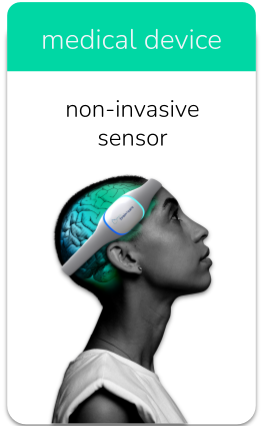
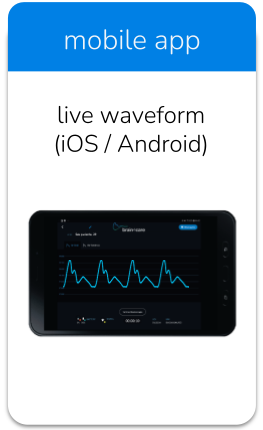
system output
estimated P2/P1 ratio for risk of intracranial hypertension and compliance progression
In-app live P2/P1 ratio trend
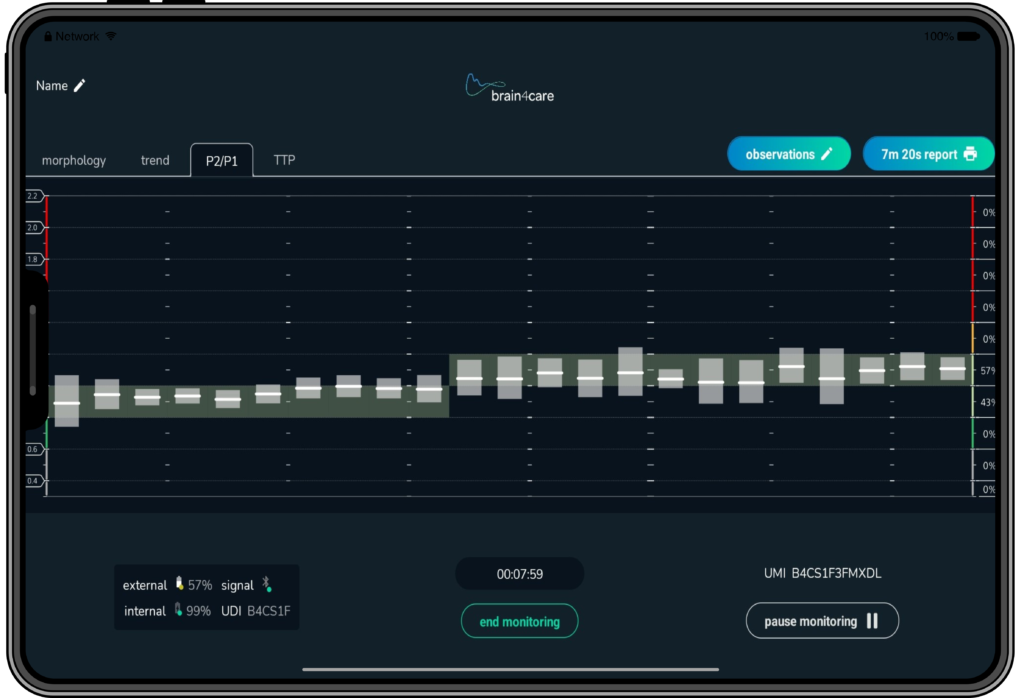
PDF report with ratio trend
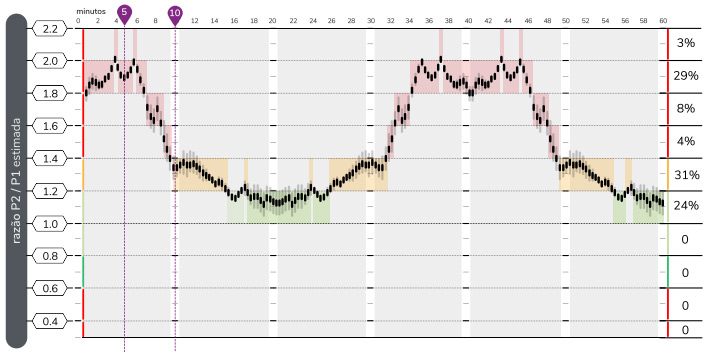
- P2/P1 > 1.4 : 90% specificity to assess risk of intracranial hypertension (IH)*
- P2/P1 > 0.8 and < 1.2 : baseline threshold for healthy population*
- P2/P1 < 0.8 : 92% sensitivity to rule out intracranial hypertension (IH)*
Examples of estimated P2/P1 ratio:
normalized time-to-peak for risk of intracranial hypertension
In-app live ttp trend
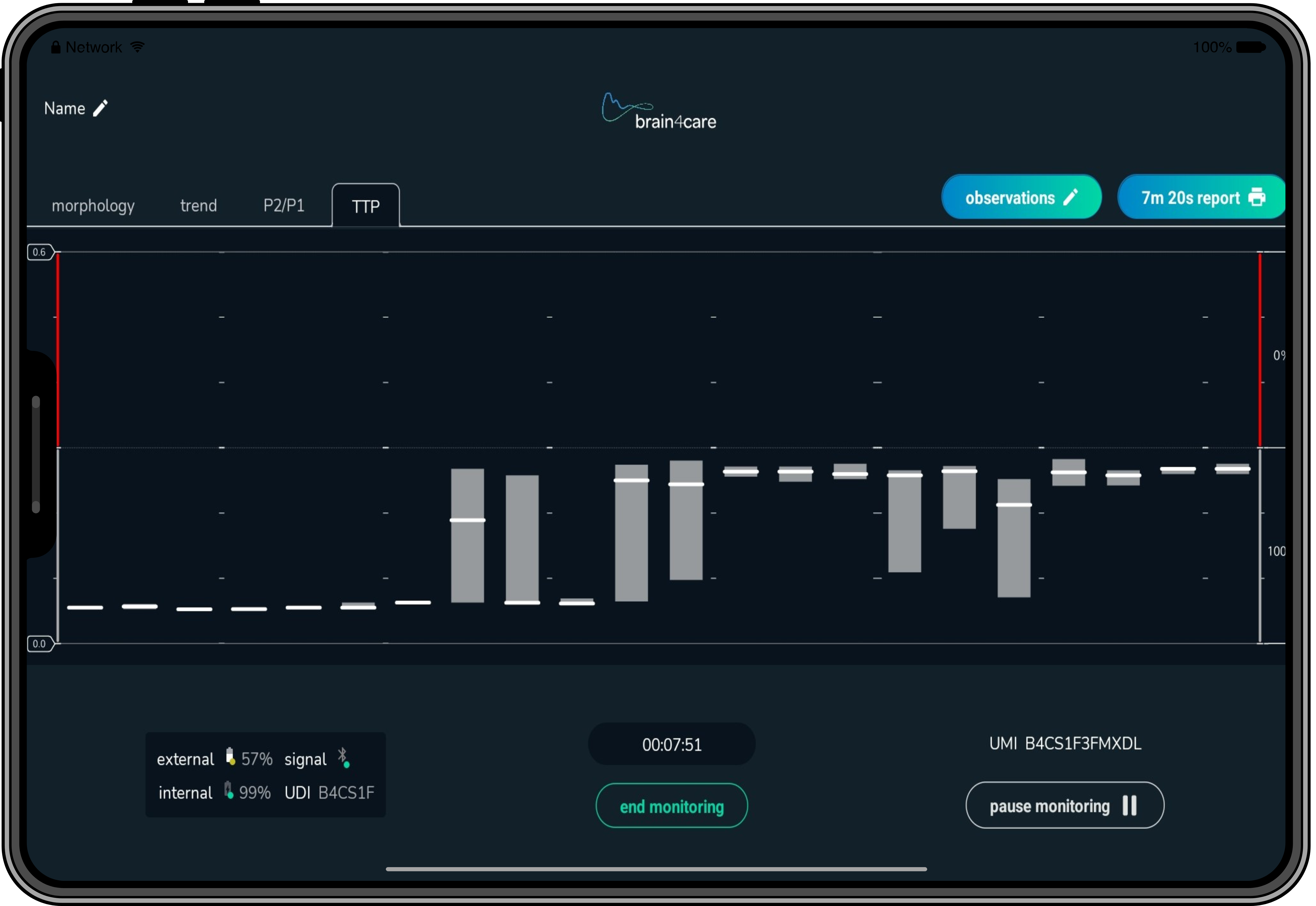
PDF report with ttp trend

- nTTP > 0.3 : 92% specificity to assess risk of intracranial hypertension (IH)*
- nTTP < 0.3 : baseline threshold for healthy population*
Visual examples of normalized Time-to-Peak :
In-app live waveform
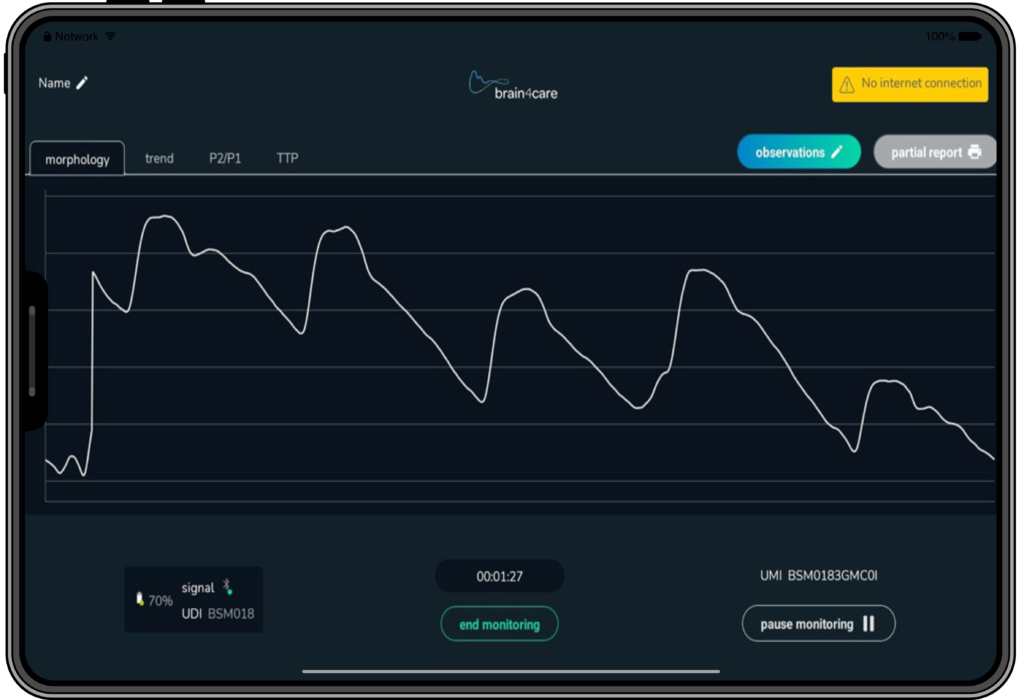
PDF report with waveform analysis
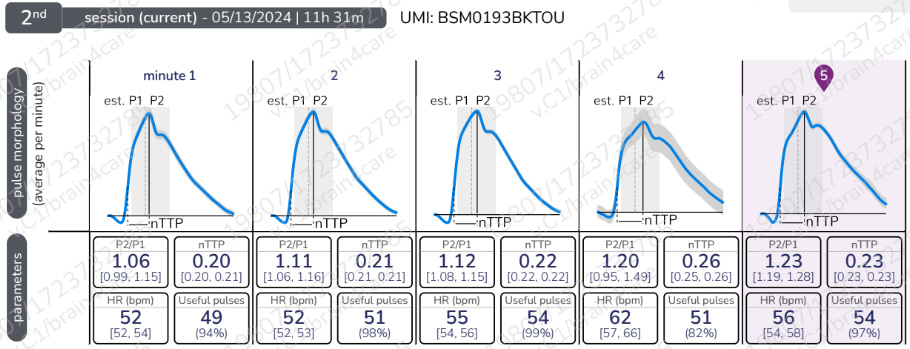
The live surrogate ICP waveform shows intracranial dynamics, the interplay between intracranial pressure and compliance.
Examples of surrogate ICP waveform shapes:

6470 E Johns Crossing Suite 160 Office 114, Johns Creek, GA 30097
